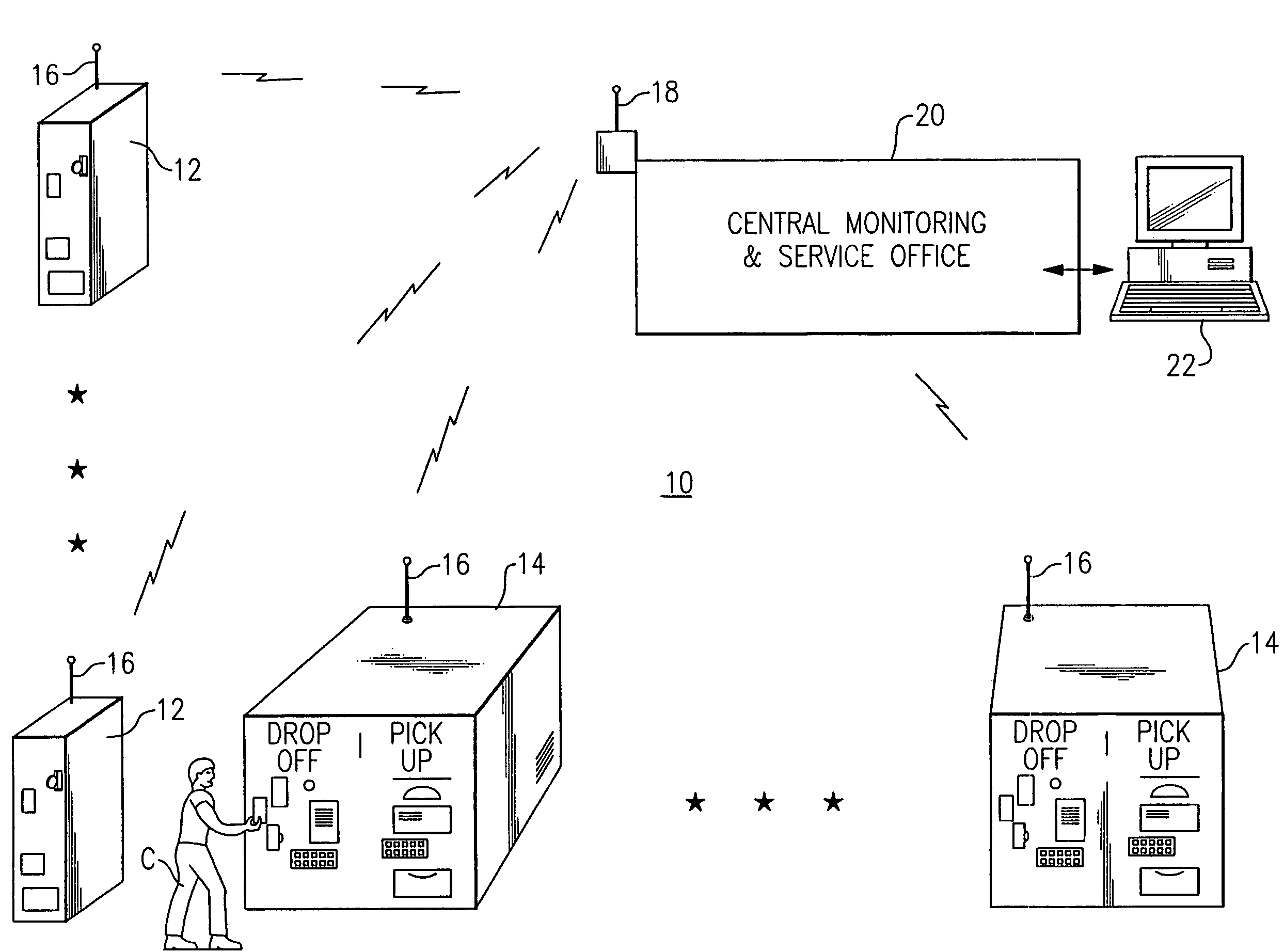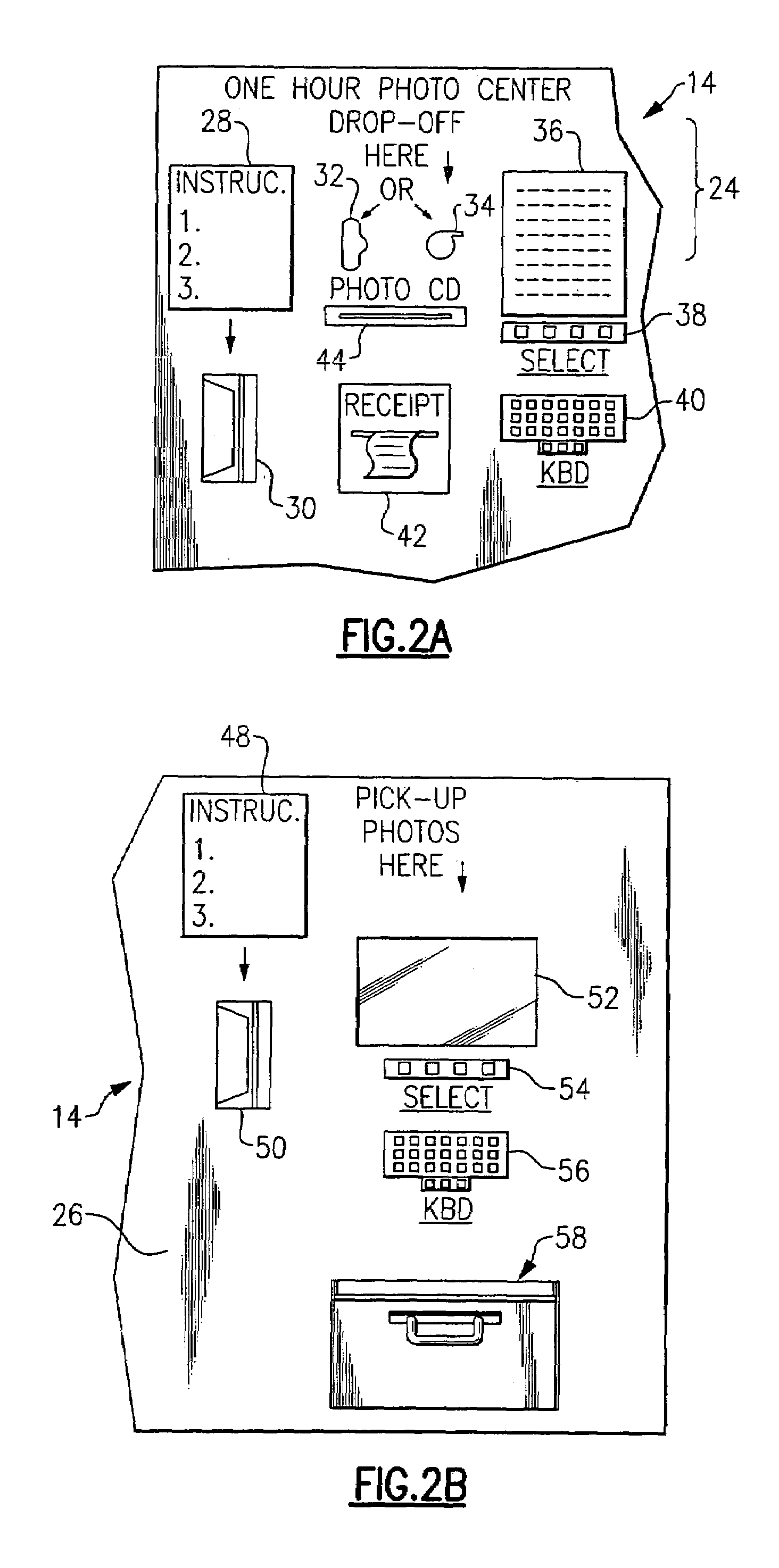Automated film processing kiosk system
a kiosk system and film processing technology, applied in the field of photographic film finishing, can solve the problems of not being able to meet the needs of customers, not having much price flexibility, and vending machines being much less attractive targets for theft, and achieve the effect of ensuring the quality of film processing chemistry and the quality of customer's finished print order
- Summary
- Abstract
- Description
- Claims
- Application Information
AI Technical Summary
Benefits of technology
Problems solved by technology
Method used
Image
Examples
Embodiment Construction
[0027]Now with reference to the Drawing, FIG. 1 represents the overall equipment and connectivity of a photo-film and photo-processing demand point-of-sale system 10 according to an embodiment of the present invention. Here is shown a multiple-kiosk sales and management system 10, in which there are one or more automated film and / or OTUC kiosks 12, 12 located at various places where customers are likely to need film or one time use cameras, such as at a tourist attraction or amusement park. There are also one or more automated film processing kiosks 14, 14 at which a customer C may deposit a roll or cartridge of exposed film for processing, or may insert a one time use camera on which the film has been exposed. This kiosk 14 will accept the film or OTUC, accept a form of identification and form of payment from the customer C, and later have the finished photographic prints of the images on the customer's film available for the customer C to pick up. These kiosks 14 have a rapid proc...
PUM
 Login to View More
Login to View More Abstract
Description
Claims
Application Information
 Login to View More
Login to View More - R&D
- Intellectual Property
- Life Sciences
- Materials
- Tech Scout
- Unparalleled Data Quality
- Higher Quality Content
- 60% Fewer Hallucinations
Browse by: Latest US Patents, China's latest patents, Technical Efficacy Thesaurus, Application Domain, Technology Topic, Popular Technical Reports.
© 2025 PatSnap. All rights reserved.Legal|Privacy policy|Modern Slavery Act Transparency Statement|Sitemap|About US| Contact US: help@patsnap.com



